Claire Mabey – 16 July, 2013
The viewer's trajectory in this exhibition has been cleverly crafted. We start with a Morris Minor and finish with Lace (2006), the latter stuck, like a curl of butter, above eye level, riddled with the precise holes of a caterpillar on a swan plant.
Tauranga
Jeff Thomson
Corrugations: The art of Jeff Thomson
29 June - October 2013
Ever since I sliced my knee open on a half-concealed rusted, undulating fence as a child, I’ve developed a wary eye towards corrugated iron. And even when Thomson’s Gumboot (2000) appeared on the road through Taihape and captured the quintessential elements of that landscape, or those people, the nature of the iron remained tough - with connotations of destruction as much as construction.
Which is why Corrugations was a revelation. Each element of the exhibition revealed an inventiveness, a delicacy and a domesticity that I hadn’t associated with that Gumboot, the HQ Holden Stationwagon in Te Papa, and the ‘Iron Man’ of New Zealand.
The sweeping, white atrium of Tauranga Art Gallery must have proved a considerable challenge. Flat, white walls push up toward Level 2, and prevent you seeing over the top. His solution is the Long Drop sculptures (2013). Curling lengths of corrugated iron fall from the very top of the walls, like tongues or ribbons, and writhe. They are an energetic, fluid contrast to the 1962 Morris Minor that sits squat at the entrance.
The car is a novel and reassuring nod to the Jeff Thomson that many New Zealanders will recall - maker of objects that construct a national identity through his use of corrugated iron. But Long Drop is the start of a journey of total, and surprising, re-definition.
The third wall of the atrium is covered in Lead Heads (1995). They sprout from the wall, with thick, nail stems and are reminiscent of Elizabeth Thomson. Yet these give the sense of even greater organic matter. They are molds made from real objects. Critters, even instruments, seem to be there.
The first level is whimsically completed by Baby Giraffe who looks out the window (an inviting view from the outside). The life-sized, painted animal is an indication of the Eden-like tendencies of the world that presents itself upstairs.
In the 1980s Thomson made 150 letterboxes designed to reflect the people and the properties they would belong to. Among them is a Cow Mailbox (1984) made of corrugated iron and the beginning of Thomson’s career with that material. The increasing complexities of Sheep Mailbox, Aeroplane Mailbox (both 1984) Kea Mailbox, (1999) and Friesian Mailbox (2001) show his first discoveries of the potential of iron.
From the robust iconography of the everyday extraordinary mailboxes we move to a space reminiscent of both decorative craft and the revival of the practical arts. Ocean Plait (2008 -12), Fireman’s Knot (2008) and Good Luck Knot (2008) are woven from thin strips of iron. They are tightly furled, powerfully robust tributes to a craft honed over thousands of years and they provide a clue to the tone of decorative and practical ritual that is to follow.
The view from the wall of knots provides a particular view across the second level of Tauranga Art Gallery. Partial walls and corners allow an obstructed long view - you get glimpses of what is to come - but also one that because parts are hidden provokes suspense. The effect is like being in a hanging garden, a maze where he has imbued a seemingly crude material with the character and unpredictability of the natural world.
It’s at this point that colour becomes suddenly obvious to the works’ impact and identities. It is either seemingly allowed to stay - a feature of the recycled iron - or it is applied to complement the material and the intention of the object. Primary colours differentiate the knots, while the Hināki hanging in the distance are practical, essential and remarkable in their execution. A set of finely woven Doilies (1998) exploit soft greys and blues, while animal forms and bouquets are as vibrant, joyous and energetic as the life forms they represent. Thomson’s use of colour is essential to the harmony of material and purpose, identity and effect.
Kete from 1995, 2011-2013, and 2012 and Woven Panels from 2007 further the growing domesticity. These are objects familiar to a home, a definite New Zealand space, and reveal an artist learning the craft of working with his medium. The works are the product of time spent with weaver, Bana Paul, and are sturdy, practical, even soft. The culmination is the 2013 Woven Dome. Made of the delicate strips of the knots, it sits against the wall at eye level, creating the impression of being able to be taken down and used, like it could have been for hundreds of years. These are the tools of true craftsmanship and it’s here that art and object, iron and weaving dispel the clunky boot.
Rounding the next corner and things are starting to feel like a hanging garden. A cluster of Hens & Roosters (1995-2013) sport the bright colours and patterns of Thomson’s new printing technique developed using long sheets of iron and a roller: tropical, camouflage, maps, Lichtenstein, zebra prints recall the decorated food tins used in Europe. Dog (c. 2013) sits gazing at them from some distance off but close enough to ruffle the feathers.
Wedding Bouquet (1999), Garden (2010-13), and Bouquet with Kowhai (2004) flourish and bloom with native plants and imported exotic prints along the longest wall of level 2 and are only eclipsed by the ethereal Hināki (eel pots) which stand, three in a row; blue, red and yellow in the centre of the space like growing columns of ivy.
These, along with the French Knits (c. 2006-11) are made of baby iron and used corrugated iron, and are powder-coated, representing the organic, not-entirely-controllable character of natural materials.
And this all leads to utilitarian application. In 2000 Thomson started his own roofing business as part of his time as the Wanganui Tylee Cottage Artist in Residence. A model home displays the concept of printed roofs: the iron alive with the painted iron that was then made into 12 standard domestic roofs. Here the artist has redefined a material and the identity associated with it.
The viewer’s trajectory in this exhibition has been cleverly crafted. We start with a Morris Minor and finish with Lace (2006), the latter stuck, like a curl of butter, above eye level, riddled with the precise holes of a caterpillar on a swan plant.
I left feeling like I’d made a discovery, as if I’d been in the fresh air. Thomson is a tradesman, an inventor, a homemaker, a roofer and a colourist - an acute observer of the natural world and of the importance of identity.
Claire Mabey
Recent Comments
Mark Amery
Thanks Claire, it's really great to see Jeff Thomson get his due. He is easily dismissed as the jokester iron ...

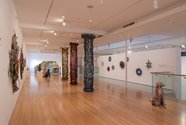
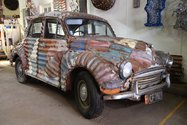
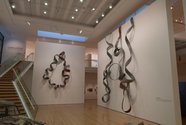
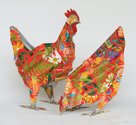
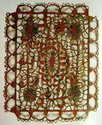
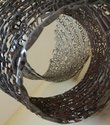
 Two Rooms presents a program of residencies and projects
Two Rooms presents a program of residencies and projects Advertising in this column
Advertising in this column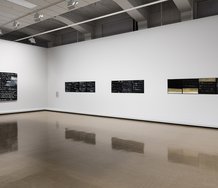
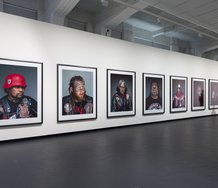
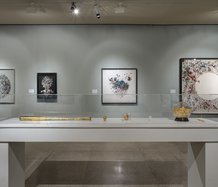
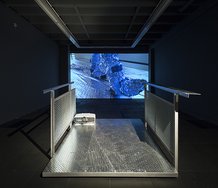
This Discussion has 1 comment.
Comment
Mark Amery, 1:38 p.m. 17 July, 2013 #
Thanks Claire, it's really great to see Jeff Thomson get his due. He is easily dismissed as the jokester iron man but it's when you start considering his constant inventiveness, application to his surroundings and aesthetic strengths you can appreciate how fine an artist he is. Nice to see someone pick up that ball again and travel to Tauranga.
Participate
Register to Participate.
Sign in
Sign in to an existing account.